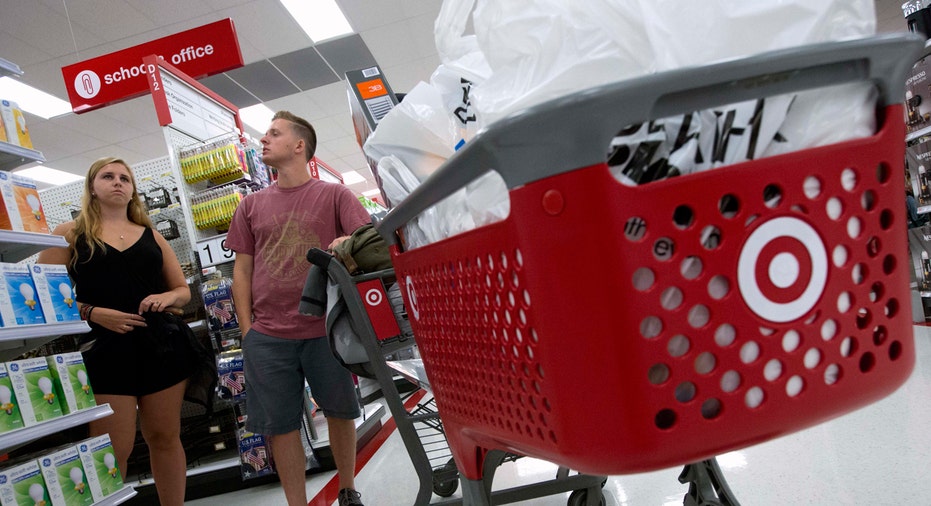Target Escalates Battle For Holiday Web Sales

As thousands of shoppers waited outside Target stores on Thanksgiving Day to buy toys, electronics and kitchen gadgets, workers inside were getting ready to send some of those very items out the door. The Minneapolis-based retailer enlisted small teams of workers in about one-quarter of its 1,800 U.S. stores to pack up some of the orders placed through Target.com earlier in the day. The employees worked in shifts, in a few cases starting up to 10 hours before the official 6 p.m. store opening, navigating dimly lighted aisles and picking items to mail to customers who pounced on Web deals hours before shoppers could in a store. The strategy is a new twist on the Black Friday weekend. What for decades had been a purely in-store shopping frenzy has ceded much ground to the Internet. A Deloitte LLP survey found shoppers expect to spend 59% of their money online for the four days starting Thursday, compared with 36% in stores. The remaining 5% is spent on catalogs. The growth in online spending is affecting how one of the nation's largest retailers operates on one of the busiest shopping weekends of the year. The change is born out of a need to cut down on delivery time and shipping costs to keep pace with Amazon.com, and to put inventory sitting on store shelves to better use by using it to fulfill orders coming from the Internet. "With the shift online, you've got to take advantage of the inventory where it is and when you can," says Rodney Sides, a vice chairman at the consultancy Deloitte. Target CEO Brian Cornell says shipping from store, even on Thanksgiving, is a more efficient way to get orders to customers for that last stretch, especially in lieu of heavily investing to open dozens of additional online shipping centers. Physical retailers have long grappled with managing the logistics of selling online. The problem stems from a legacy that includes hundreds of stores that must be filled with millions of pieces of inventory and manned by thousands of employees. Layered on top of that is a network of online fulfillment centers. Amazon and other pure-play online retailers don't have that complexity. They can spread out inventory at a smaller number of locations -- Amazon says it has more than 50 distribution centers -- and focus on shipping packages. The online giant is compressing shipping times further, with same-day delivery available in 16 metro areas free for members of its Prime service, and offering to deliver orders in as little as an hour in some markets. Retailers call their answer omnichannel, a strategy that views all inventory the same and uses algorithms to calculate whether it makes more sense to ship online orders from a distribution center or a store. In some cases, customers want the order ready at a store to pick up. The National Retail Federation says nearly one-third of retailers are working on shipping products from stores. However, many take a pause during the busiest times of the year, and none is taking it as far as Target this year. Best Buy, Macy's and Wal-Mart Stores all were open Thanksgiving, but expected to suspend efforts to ship items from stores. "It's just a very busy time," says Dan Toporek, a spokesman for Wal-Mart, which plans to ship nearly all online orders from distribution centers in the 48 hours around Black Friday. "We want to make sure we're delivering the best experience in stores for customers." While the logistics of shipping from stores before the rush of Thanksgiving shoppers can make sense -- stores will be empty, orders will be easy to find before the crowds mess up things -- the financials can be a challenge. The biggest cost of shipping from store is labor, analysts say, and holiday-pay rates mean it costs at least 1.5-times more than normal. "Ship from store can turn the model upside down if you're not careful," Mr. Sides says. Retailers face additional margin pressures from shoppers, who don't want to pay shipping fees. Best Buy and Target have eliminated shipping charges on all orders for the holidays. Wal-Mart, meanwhile, has a $50 threshold to eliminate the charge. There is also the incongruity of whittling your inventory on one of the few appointment shopping days of the year. "All of your efforts have been toward driving traffic to stores," says Nikki Baird, managing partner at Retail Systems Research, a research firm. "Why would you then ship from stores to meet demand that's coming from online?" Target isn't shipping out of stores some of the most heavily advertised items. The prime deals -- $249 55-inch televisions and $395 drones with high-definition cameras -- are reserved for shoppers in stores, says Eddie Baeb, a spokesman. Anyone who bought those items on Target.com Thursday, where the same deals were available, would get them from distribution centers. Target has 462 stores around the country shipping items from stores. Most were expected to have workers arrive two to four hours before Thursday's opening. Forty-four stores meanwhile have souped up shipping operations with expanded backrooms for packing up to 1,500 orders a day.
Drew FitzGerald, Suzanne Kapner and Sarah Nassauer contributed to this article.
Subscribe to WSJ: http://online.wsj.com?mod=djnwires